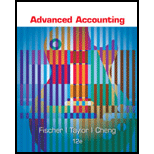
Concept explainers
Business combination:
Business combination refers to the combining of one or more business organizations in a single entity. The business combination leads to the formation of combined financial statements. After business combination, the entities having separate control merges into one having control over all the assets and liabilities. Merging and acquisition are types of business combinations.
Consolidated financial statements:
The consolidated financial statements refer to the combined financial statements of the entities which are prepared at the year-end. The consolidated financial statements are prepared when one organization is either acquired by the other entity or two organizations merged to form the new entity. The consolidated financial statements serve the purpose of both the entities about financial information.
Value analysis:
The value analysis in a business combination is an essential part of determining the worth of the acquired entity. The
:
Prepare the consolidated worksheet for Company P and Company S for the year ended December 31, 2016.
Want to see the full answer?
Check out a sample textbook solution
Chapter 4 Solutions
Advanced Accounting
- Greenfield Electronics, Inc. has an equity multiplier of 1.75, total asset turnover of 1.42, and a profit margin of 7.5 percent. What is the company's ROE? (Do not round intermediate calculations. Enter your answer as a percent rounded to two decimal places.)arrow_forwardSolve my problem with accountingarrow_forwardDetermine their respective contribution marginsarrow_forward
- Can you solve this general accounting problem using accurate calculation methods?arrow_forwardArden Manufacturing uses a process costing system. Beginning inventory for June consisted of 2,400 units that were 55% completed. 14,500 units were started during June. On June 30, the inventory consisted of 1,200 units that were 40% completed. How many units were completed during the period?arrow_forwardWhy does capital adequacy determine accounting method selection? (a) Standard methods work for all situations (b) Available financial resources influence reporting choices (c) Capital levels never affect accounting (d) Methods remain constant regardless of resources. solve thisarrow_forward

 AccountingAccountingISBN:9781337272094Author:WARREN, Carl S., Reeve, James M., Duchac, Jonathan E.Publisher:Cengage Learning,
AccountingAccountingISBN:9781337272094Author:WARREN, Carl S., Reeve, James M., Duchac, Jonathan E.Publisher:Cengage Learning, Accounting Information SystemsAccountingISBN:9781337619202Author:Hall, James A.Publisher:Cengage Learning,
Accounting Information SystemsAccountingISBN:9781337619202Author:Hall, James A.Publisher:Cengage Learning, Horngren's Cost Accounting: A Managerial Emphasis...AccountingISBN:9780134475585Author:Srikant M. Datar, Madhav V. RajanPublisher:PEARSON
Horngren's Cost Accounting: A Managerial Emphasis...AccountingISBN:9780134475585Author:Srikant M. Datar, Madhav V. RajanPublisher:PEARSON Intermediate AccountingAccountingISBN:9781259722660Author:J. David Spiceland, Mark W. Nelson, Wayne M ThomasPublisher:McGraw-Hill Education
Intermediate AccountingAccountingISBN:9781259722660Author:J. David Spiceland, Mark W. Nelson, Wayne M ThomasPublisher:McGraw-Hill Education Financial and Managerial AccountingAccountingISBN:9781259726705Author:John J Wild, Ken W. Shaw, Barbara Chiappetta Fundamental Accounting PrinciplesPublisher:McGraw-Hill Education
Financial and Managerial AccountingAccountingISBN:9781259726705Author:John J Wild, Ken W. Shaw, Barbara Chiappetta Fundamental Accounting PrinciplesPublisher:McGraw-Hill Education





